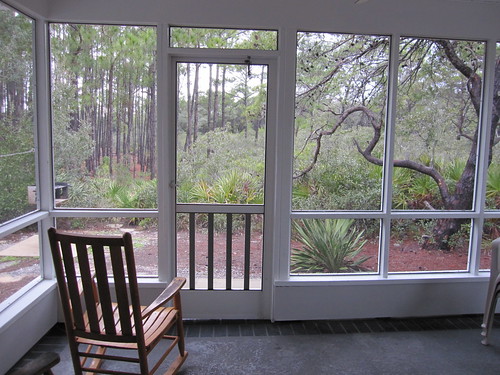Posts Tagged ‘Homesteading’
Peak Oil
I never intended this site to talk about militia tactics, conspiracy theories or post-oil survivalist ways, but it is becoming increasingly impossible to be involved in homesteading and the local food culture and not be at least aware of, if not affected by, the topic of Peak Oil.
I take solace though that the more I read and learn about energy issues the more content I feel that I have chickens who give us eggs, lambs who provide us with meat, a garden, berry patch and fruit orchard that supplies us with fresh produce and the where with all to combine those ingredients into a satisfying meal for my family.
If this topic is new to you or you’ve never heard about it before you may want to ask yourself these simple questions. What is Peak Oil? Do you think Peak Oil is fact or fiction? Do you or your family base decisions based on the future of oil?
Do you think the current boom in small farming and homesteading is the result of worries about peak oil, the food supply or energy issues in general, or is it just a fad? I’m sure our readers would be curious to know what you all think.
The Peak Oil clip above is a quick 3 minute video visually explaining Peak Oil, what oil is used for, and what the future may hold with regards to Peak Oil.
To learn more about Peak Oil check out this YouTube video by VideoNation, or simply plug Peak Oil into your browser window for more videos and articles.
Come on in and have a seat
So we’ve been writing about suburban homesteading for some time now, almost a year actually. And since this site started we’ve met a lot of great people along the way.
People from all over the world take part in all the little triumphs (and troubles) of homesteading. We want you to know we really understand what you all are trying to achieve and hope that in some way we’ve been helpful. To say something on our little electronic soapbox and have people (hundreds a month) read it from the ether is a good feeling. Readers are what turn blogs into communities and not an exercise in self-aggrandizement. Thank you. We think you’re all neat.
So, now we want to ask you a favor. If you read this blog regularly, please respond to this post with a comment about yourself. Tell us where you’re from, what you do, what’s on your homestead, or what your favorite book is. Let us know if homesteading is a future dream of yours or a current reality? What would you like us to write more about? Is there anything we can explain better? The more we know about the people reading the blog, the better we can write stuff you’ll be interested in taking time out of your busy lives to read. (and honestly, there’s so much stuff rolling around our collective heads that it’s hard to think of topics, sometimes.)
But, beyond comments and criticisms, we’d just really like getting to know you. So please come on in, grab a sit, and say hello.
Six Reasons – Holding You Back from Homesteading

1. Overconfidence – The assumption that a crisis or disaster will never hit your neck of the woods. The idea that if disaster does strike, city, county and state government agencies will swoop in put everything back to normal.
Overconfident in your judgment and abilities, that they are greater than your actual skill level or knowledge. Never assume you know everything or even enough. We can always learn and expand our knowledge base. I learn new things and contemplate fresh ideas all the time, the guy or gal thinking they know all there is to know will likely be the first one in trouble.
Be open to useful information or insights from the unlikeliest of places or people. Small tidbits can garner useful information.
2. Procrastination – Putting things off to the last possible minute; giving more importance to other tasks, chores, and parts of your life than how to take care of your family. Procrastinating can get you killed. In a true economic or societal collapse you may not have time to run to the corner grocery to stock up. And, if you do have the time there may not be anything to buy once you get there.
Everyone, who didn’t plan ahead, will be doing the same thing – running to the nearest store. The lines will be long; the trip can be dangerous as people vie for the same products. It is a situation that is best avoided. It’s better to get off your butt now, stock what you need and get it done. A lot of people fear stocking up and being prepared because they think they will never use what they bought, eventually there stocks go bad and they waste money.
This is nonsense. You will always need to eat, so the solution is simple – eat what you store and replace what you’ve eaten. First in – first out. Repeat. This way you never spend more money than you normally would. All you’re doing is buying what you already need, just in advance of the need.
3. Inefficient use of resources -Wasting money (resources) on things of lesser importance, while neglecting the stuff needed for your homestead to survive and thrive. Concentrate your efforts on food supplies, garden supplies, livestock supplies and the ability to filter drinking water and collect water for outside watering.
It’s important to protect what you have, but eating and drinking are more important to your family’s long-term survival and comfort. Sure we need to protect what we’ve put away, just don’t neglect the other stuff.
4. Failure to act – This one ties in with procrastination and indecision and many of us suffer from it. Not only will it interfere with your homestead plans it can stop you from planning at all.
Look at your situation, form a plan (write it down), break it down into manageable projects and do it. No excuses.
Anything worth doing well is worth doing badly in the beginning. We all started from scratch. None of us started knowing it all. The difference is we started, learned from our mistakes, asked questions, and moved forward one step at a time.
5. Lack of persistence – Most people start their homestead with the utmost determination and desire to get things done – but they stop when they run into the first obstacle. They lack persistence.
Most things aren’t easy, if you give up before completing your goal, you will never get anything done. Quitters never succeed. Set realistic goals (write them down), break them down into phases and work through it until each goal is completed.
The key word is realistic, never set goals that are impossible to reach. Most of us can’t afford the country retreat, herd of cattle, flock of sheep, or acres of fruit trees . We don’t have the time, between jobs and family responsibilities to tend acres of vegetable gardens. Thinking this is what you need to homestead will only discourage you before you even start. Set realistic goals, not pie in the sky dreams. Write it down and work at it until it is a reality.
6. Divided actions – Many homesteaders run around like the chicken with its head cut off. Their actions are divided, fragmented, disorganized to the point where they never get anything done.
A raised bed here, a few bags of beans there, maybe work on a chicken coop or rabbit hutch – but they never meet their goals, never get anything done. You know who I’m talking about…
Take a look at your personal situation and decide, what is the most important consideration for your homestead to begin and survive? Again make a list. List the most important to the most trivial. Work down the list in descending order until your goals are completed.
What’s been holding you back from starting your suburban homestead? What advice do you have for others who are considering the leap? Let us know what helped you or what you think will help others.
![]() photo credit: Inside Disaster
photo credit: Inside Disaster
A Homesteading Christmas
How ever you celebrate this time of year…
SuburbanHomesteading.com wishes you all a…
Buon Natale e Felice Anno Nuovo
Frohe Weihnachten und Happy New Year
Merry Christmas agus Athbhliain Bliain
Feliz Navidad y Prospero Ano Nuevo
God Jul og Godt Nytt År
Veselé Vánoce a šťastný Nový rok
圣诞快乐,新年快乐
Merry Christmas and Happy New Year!
In Defense of Leftovers

Everything these days seems to be disposable. From appliances to electronics to clothes, even the food we eat. Each year thousand of pounds of perfectly usable food is thrown into the garbage, while thousands of dollars go down the drain. And, the restaurant industry hasn’t helped much, with larger portions that most people can’t consume in one sitting. Oh, some restaurants compost the waste and some donate leftovers to shelters or soup kitchens. But, the reality is we prepare way more than we consume.
Have you sat in a restaurant and noticed how much food goes back to the kitchen? Or been to a party or family gathering and watched the buffet plates being piled higher and higher. Ever thought about the number of meals that could be made from those leftovers? Most people find leftovers distasteful, but for the more self-sufficient homesteading crowd leftovers are just the ingredients for another meal.
Food waste can be a challenge for many households, but it doesn’t need to be. Even small bits of leftovers can be transformed into luscious, satisfying meals or snacks. With a few tricks and some simple recipes you’ll soon be turning last nights’ leftovers into tonight’s hearty dinner. Of course, the number of servings will vary with the amount of leftovers you have.
Take a simple chicken dinner – it can be turned into several additional meals using any remaining meat and the carcass for broth. Use breast meat to make chicken salad; chicken, broccoli and rice casserole or chicken and broccoli Alfredo. Leg and thigh meat can be used to make chicken soup. Simmering wings, skin and remaining carcass makes a wonderfully rich chicken broth for use in other dishes. Read the rest of the story »
There’s vacations and staycations, but what about haycations?
I found this story in the New York Times and thought you all might enjoy it. Whether seasoned gentleman farmer or suburban homesteading newbie, I think anyone would enjoy learning something new that could benefit their homestead, I know I would. And, what a great way to meet like-minded people.
Read the story here…
Suburban Homesteading – One, Two, Three
Three Easy Steps To Get You Started – Homesteading In Suburbia
Part One of a Three Part Series
Starting a suburban homestead can be a daunting task, not to mention gleaning through the mounds of information and trying to scale it down to meet the needs of your suburban homestead. With this in mind, Suburban Homesteading – One, Two, Three will lay out the basic steps for turning your suburban home into a productive homestead.
During the homesteading era of the 1800’s, a family’s primary concerns were to provide shelter, warmth, food and water. But for the modern day suburban homesteader, these are either already provided through the home (i.e. heat and water) or easily accessible as in the case of food from a grocery or big-box store. So, homesteading becomes a choice rather than a necessity. Even though you have time to think about what you want to do as a suburban homesteader, there are still practical steps each family should take. And the first step to take is to PLAN.
STEP ONE – Having the Family Discussion
If you’ve been thinking about turning your humble suburban lot into a thriving, productive “mini-farm,” discuss it with your family first…kids included. It’s difficult to homestead alone, and without the family’s “buy-in,” it can be an uphill struggle.
Talk about the kind of homestead you want to have and how self-sufficient you want to become.
The most important step in a successful homestead that doesn’t overwhelm you is “THE PLAN”. Since this is the beginning stage of the plan, dream big and list everything you want to do, be and have. Don’t worry about having enough space or buying the right supplies, there are plenty of people who grow food on apartment balconies or on condo patios.
Reality will set in soon enough – forcing you to scale down your plans and be a bit more realistic. But, for now, the sky’s the limit.
To help get you talking about the possibilities a sampling of questions you and your family will want talk about is below. As you go through this process, more questions may come to mind. Include any of your own questions along with the answers to the list that is provided. This is by no means all the questions that should be asked. They’re provided just to get you thinking.
The answers to some of these questions will depend on the amount of time and effort you want to dedicate, and can dedicate to your homesteading venture.
Be sure to write down your answers so you’ll have them for future steps in the process. Read the rest of the story »



Recent comments
Aenean nonummy hendrerit mauris. Phasellus porta.